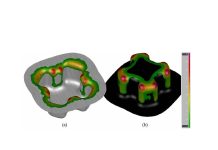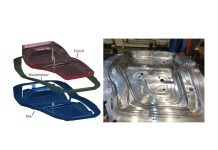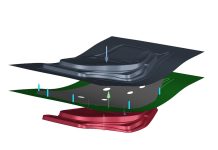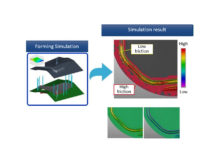Validating the Tribology Argument
Through a Customer Project
A recent project took place between Skoda and TriboForm. What’s so fascinating about this project was that TriboForm incorporated actual methods utilized in production into their simulation model.
Two experts: Johan Hol, Technical Product Manager, from TriboForm and Marc Lambriks, General Manager from AutoForm Netherlands, gave this interview, revealing the inside story.
Tribology appears to be one of the hot topics at present as OEMs seek after new approaches to ramp up quality. In production Skoda was one producer which had already taken measures to deal with tribological effects. Through experience and know-how they successfully decreased uncertainties within the process, foremost by controlling lubrication to better deal with friction.
Typically engineers adapt changes on the press through trial-and-error. ‘The question was: how can these counter-measures be integrated into simulations and applied on a larger scale?’ says Johan Hol.
The Front Fender Challenge
‘Skoda was fully aware that different lubricants and lubricant amounts affect the quality of the final resulting parts’ says Johan Hol. ‘For example when coils come in – they first decoil them to create blanks, and might wash them and re-lubricate them to reduce surface friction, which eliminates the risk of splits during stamping. The challenge was to integrate these approaches, in a numerical manner, for all their parts through simulation, and thus achieve a new level of product quality – all validated through real production.’

Now TriboForm was tasked with improving a Skoda Fabia front-fender. Being a relatively deep part, it offered several issues including cracks and surface defects, presenting a special challenge.
‘This is where the project got interesting, as we generated corresponding TriboForm libraries specifically for the part, integrated it in their Pam-Stamp and AutoForm simulations, and as a result we could accurately mimic the product results in simulation, that had a strong correspondence to reality.’ Johan Hol
During the project the TriboForm team set their TriboForm Analyzer to task simulating the effect of friction control. ‘Beforehand where Skoda experimented with changing lubrication quantities – NOW they instead could play around with lubrication amounts in simulation by using our tool’ says Johan Hol.
Marc Lambriks from AutoForm added ‘Here we achieved improved predictability of the forming process. Skoda normally simulated a process using a fixed coulomb friction which caused this specific front fender to pass all the criteria, meaning that from a simulation point of view it does not split. Yet in production they noticed that the part indeed had splits using the normal amount of lubricant (0.6 g/m2) whereas they found that if they increased the lubricant amount it solved the issue. Then in using our software with TriboForm they were actually able to predict this behavior! They demonstrated through simulation the same issues arising from decreased lubricant and its resolution through an increase. Normally in using a coulomb friction you wouldn’t have any opportunity to introduce lubricant quantities into your simulations. However this is exactly what TriboForm achieved, so it’s entirely brilliant.’
This demonstrated an improved draw-in prediction along with improved simulation accuracy.
The front fender in question was already in production. Prior to this project Skoda had managed issues through increasing the lubrication until the splits stopped. During the project however the simulation demonstrated the same problems they faced every day.
Johan Hol adds ‘They saw how our simulations agree with reality. As a result of that experience our partner Skoda now has a numerical tool at hand which identifies these issues at an earlier stage, during part and tooling development. Now using the tool they can analyze the sensitivity and quality of the part lubrication. Furthermore they are enabled to now predict the effect of various coating types.’
Steel coatings naturally have a tribological effect in terms of influencing final part quality. It is the TriboForm Analyzer which allows engineers to account for the various coating types which have been applied to steel blanks.
‘This is drawn from the analyzer’s library, starting with standard zinc coatings to advanced coatings. Thus several combinations are now available through the simulations, based on e.g. the type of lubrication and the type of coating, which are run through the analyzer for the best result ’ says Johan Hol.
The Business Case Results
‘The result of this study is a proof that TriboForm really delivers more reliable and realistic stamping simulations with respect to critical quality factors like formability, draw-in and springback. All of this matters to the OEM, as if they have a split or wrinkle they have to throw away the panel. In doing so they have to stop the press and re-adjust things. Ultimately they are saving quite a lot of time and money, not only on thrown away parts but also on the downtime’ says Marc Lambriks.

Marc finally said: ‘For this specific part Skoda estimated the total savings close to 80 k€ per part for a single model! That is a huge saving and demonstrates clearly what kind of return-on-investment a company can achieve when applying state-of-the-art simulation technologies!’













